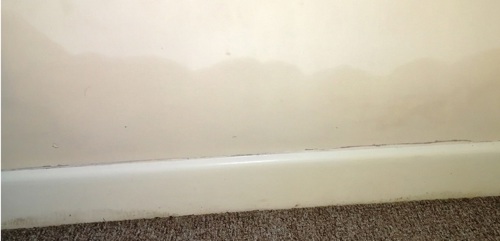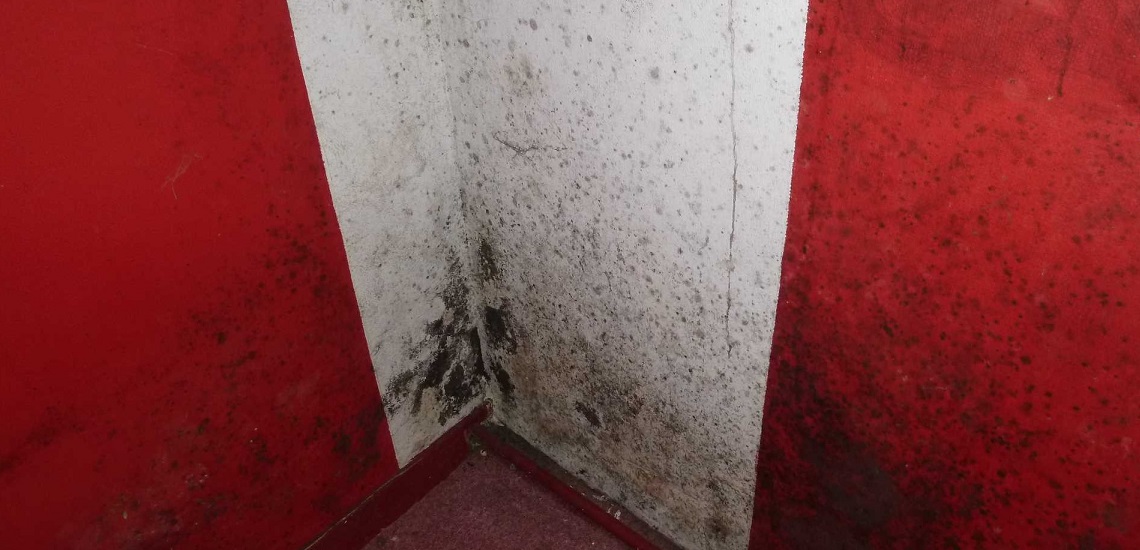Damp, mould and condensation
We're committed to making sure your home is warm, safe and dry.
If you’ve spotted mould in your home, getting rid of it should be your first priority. If you can find out what’s causing it, you can stop it from happening again.
Damp and mould can happen due to leaking pipes, when rain enters your home, or, most commonly, due to a build-up of condensation.
If you’re experiencing damp, mould or condensation issues our specialist team can help, so please get in touch. Call us on 0115 915 2222 between 8.30am - 5pm, Monday to Friday, or email us.
What is damp, mould and condensation?
Damp

There are two types of damp - rising damp and penetrating damp.
Rising damp comes up through the floor or wall, penetrating damp is caused by water getting into homes from the outside because of a flood or backed up drain, broken roof tile or leaking gutters.
Signs of damp include patches on walls and ceilings, bubbling wallpaper, flaking paintwork, a fusty smell or large cracks on walls.
Mould

Mould is a natural micro-organism found in the air. Look out for mould spores (little black dots or marks) in corners of rooms, window frames, on walls and behind furniture, especially in kitchens and bathrooms.
If left to grow it can cause allergic reactions and irritations.
Condensation

Condensation is very common, especially when it's cold outside. It occurs when moisture in the air meets cold surfaces and turns into water droplets.
Everyday activities like cooking, ironing, showering and even breathing can cause condensation.
Condensation can cause mould to grow and spread.
Health issues
If you have damp and mould in your home you're more likely to have respiratory problems, respiratory infections, allergies or asthma. Damp and mould can also affect the immune system. Everyone is vulnerable to the health impacts of damp and mould, but people with certain health conditions, children and older adults are at greater risk.
You can read more on the NHS website.
How you can help manage damp, mould or condensation
Condensation is one of the biggest mould-causing culprits, and something that you can help reduce.
Reduce moisture: managing humidity can help prevent damp and mould.
- Always use a lid on pans when cooking to help reduce steam and condensation in your kitchen. This means you can turn down the heat on your hob, saving energy and money.
- Use an extractor fan if you have one or open a window ideally for 20 minutes after you’ve finished cooking. Remember to close kitchen doors to stop condensation spreading to other rooms.
- Avoid using radiators to dry clothes, it stops them working well and can make your home colder (leading to higher heating costs). Use an airer and where you can, keep the room cool with a window slightly open and the door closed.
- If you use a tumble dryer, either use a condensing one or make sure the exhaust vent is installed properly - don’t just hang it out of a window.
- When filling a bath, run cold water before adding hot water.
Good ventilation: condensation is less likely to happen in well-ventilated and warm homes.
- Avoid covering air bricks or ventilation holes, and don’t switch off any extractor fans.
- Open windows slightly. If your windows have trickle vents make sure they are open and not blocked.
- When running water, try running the cold tap before the hot to help reduce moisture.
- Leave a small gap between furniture and the wall to let air flow. Avoid overfilling wardrobes and cupboards.
Control the temperature in your home: a low background heat can help reduce condensation in your home.
- Use a thermostat to help control your heating and energy bills. Try to keep your home at an event temperature ideally between 18 and 21 degrees Celsius.
- Make sure you seal your doors and windows properly to help regulate the airflow and temperature in your home.
- Close your blinds or curtains after dark to help keep heat in. Then open them again during the day to help the airflow around your windows and doors.
If you are worried about your energy bills, we've brought together some useful information here: Energy bills advice
Treating mould yourself
If you find that you have mould, don’t try to remove it by brushing or using a vacuum cleaner.
Wipe down affected areas daily – don’t use bleach or washing up liquid. You should apply a fungicidal wash available from most supermarkets and DIY stores, but make sure you follow the instructions. Dry-clean mildewed clothes and shampoo any affected carpets.
Every day you should open a window to the first notch at either side or each end of your house, and at the same time, open any interior doors. Leave them open for 30 minutes. Remember to keep your home safe – don’t leave windows open when you go out.
If you need to redecorate, use a good-quality fungicidal paint and a fungal resistant wallpaper paste to help stop the mould coming back.
Watch our video
Still got problems?
If you’ve taken all the recommended steps to get rid of condensation and you still have a problem, please call us on 0115 915 2222 between 8.30am - 5pm, Monday to Friday, or email us.
Find out more
You can find out more by taking a look at the government's Existing Home Ventilation Guide.

